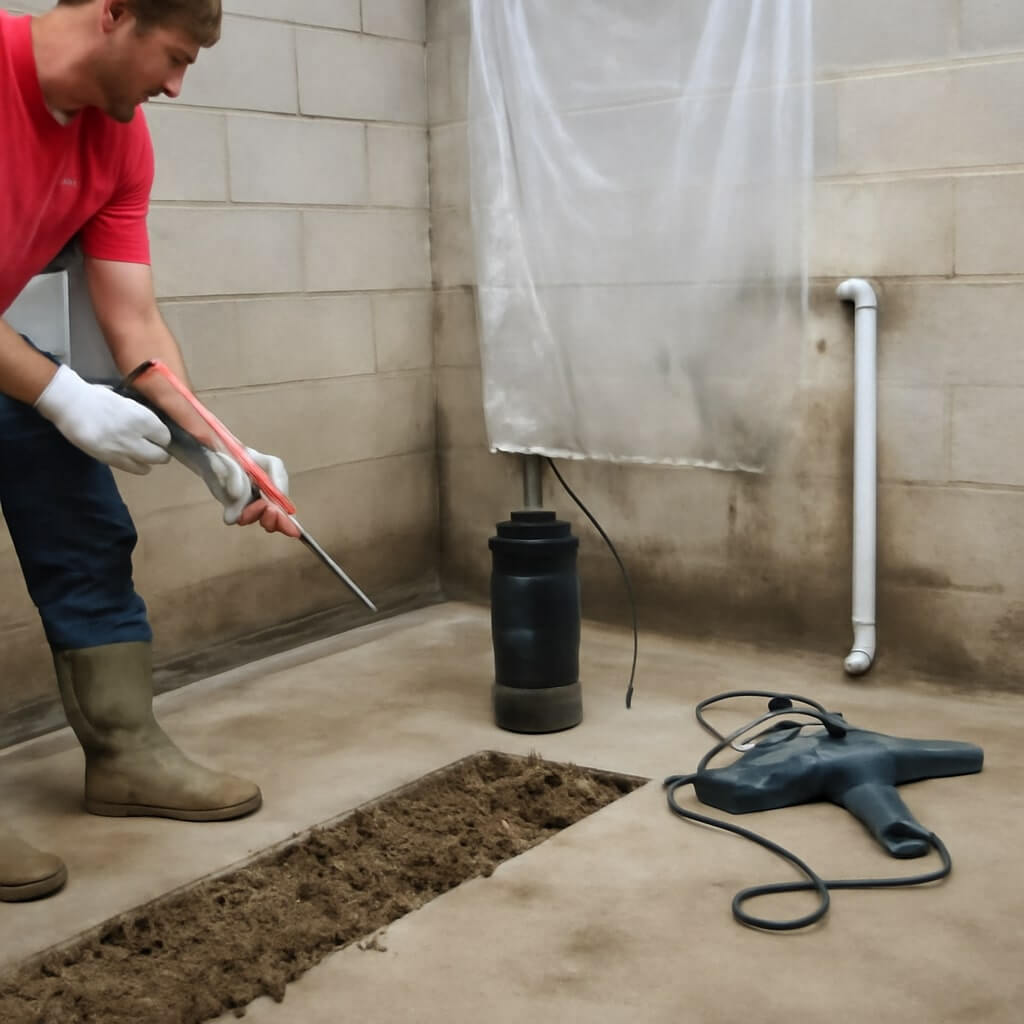When it comes to basement waterproofing, you might overlook some critical factors that could compromise the entire process. Ignoring proper drainage, for instance, can lead to serious issues down the line. Additionally, wall and floor cracks are often dismissed, creating vulnerabilities. These mistakes can escalate quickly, resulting in expensive repairs and structural damage. Understanding these common pitfalls is essential for safeguarding your basement effectively. Let’s explore these mistakes further.
Key Takeaways
- Ignoring proper drainage systems can cause water pooling and structural damage near foundations.
- Overlooking wall and floor cracks may lead to ineffective waterproofing; regular inspection is vital.
- Focusing solely on interior waterproofing neglects necessary exterior drainage and protection measures.
- Using inadequate sealants can result in persistent moisture problems; choose high-quality options like polyurethane or epoxy.
- Failing to maintain and inspect regularly allows small issues to escalate into costly repairs.
Ignoring the Importance of Proper Drainage
When it comes to basement waterproofing, neglecting proper drainage can lead to significant problems down the line. Effective drainage systems are essential for managing water flow around your home.
Without them, excess water can pool near your foundation, increasing the risk of leaks and structural damage. You should verify your gutters are cleaned regularly and that downspouts direct water away from your basement.
Additionally, installing a sump pump can help manage any groundwater that accumulates. By prioritizing these drainage solutions, you’ll protect your basement from future issues, saving you time and money in costly repairs.
Overlooking Wall and Floor Cracks
Many homeowners underestimate the impact of wall and floor cracks on basement waterproofing. A thorough crack assessment is crucial to identify vulnerabilities. Ignoring these cracks can lead to significant water intrusion.
Here are key considerations for effective repair techniques:
- Identify: Inspect your basement regularly for new or widening cracks.
- Evaluate: Determine the severity and type of cracks; not all require the same solutions.
- Repair: Use appropriate materials, like epoxy for minor cracks or professional help for larger issues.
Addressing these cracks promptly can save you from costly damage and guarantee your basement remains dry and secure.
Neglecting to Address Exterior Waterproofing
Although you might focus primarily on interior solutions, neglecting exterior waterproofing can lead to serious long-term issues for your basement.
Effective exterior drainage solutions, such as proper grading and well-placed downspouts, direct water away from your foundation. Utilize high-quality waterproofing materials like membranes and coatings to protect your walls from moisture intrusion.
Implementing effective exterior drainage solutions and using quality waterproofing materials are key to safeguarding your foundation from moisture.
Regularly inspect gutters and drains to guarantee they’re functioning correctly. If you overlook these external factors, water can accumulate, increasing hydrostatic pressure against your basement walls, ultimately compromising their integrity.
Prioritizing exterior waterproofing is essential for a thorough and lasting solution to basement moisture problems.
Using Inadequate Sealants
Using inadequate sealants can undermine your basement waterproofing efforts, leading to persistent moisture issues.
To guarantee effective sealing, consider these key points:
- Sealant Types: Choose appropriate sealants like polyurethane, silicone, or epoxy, depending on your basement’s specific conditions.
- Surface Preparation: Properly clean and dry surfaces before application to enhance adhesion and effectiveness.
- Application Techniques: Use caulking guns or brushes for uniform application and make sure you apply at the correct temperature for best curing.
Failing to Maintain and Inspect Regularly
Regular maintenance and inspection of your basement waterproofing system are essential for long-term effectiveness. By neglecting routine inspections, you risk overlooking early signs of water intrusion or damage.
Create a maintenance schedule that includes checking sealants, sump pumps, and drainage systems at least twice a year. During these inspections, look for cracks, mold, or standing water, which can indicate potential issues.
Addressing small problems promptly can prevent costly repairs down the line. Remember, a proactive approach guarantees your waterproofing system remains effective, protecting your basement from moisture-related damage and preserving your home’s structural integrity.
Conclusion
To guarantee effective basement waterproofing, it’s essential to avoid these common mistakes. Proper drainage must be prioritized, and you should routinely check for any wall or floor cracks. Don’t neglect exterior waterproofing solutions and confirm you’re using high-quality sealants. Finally, regular maintenance and inspections are key to catching small issues before they turn into costly repairs. By addressing these pitfalls, you’ll safeguard your basement against moisture and structural damage in the long run.

